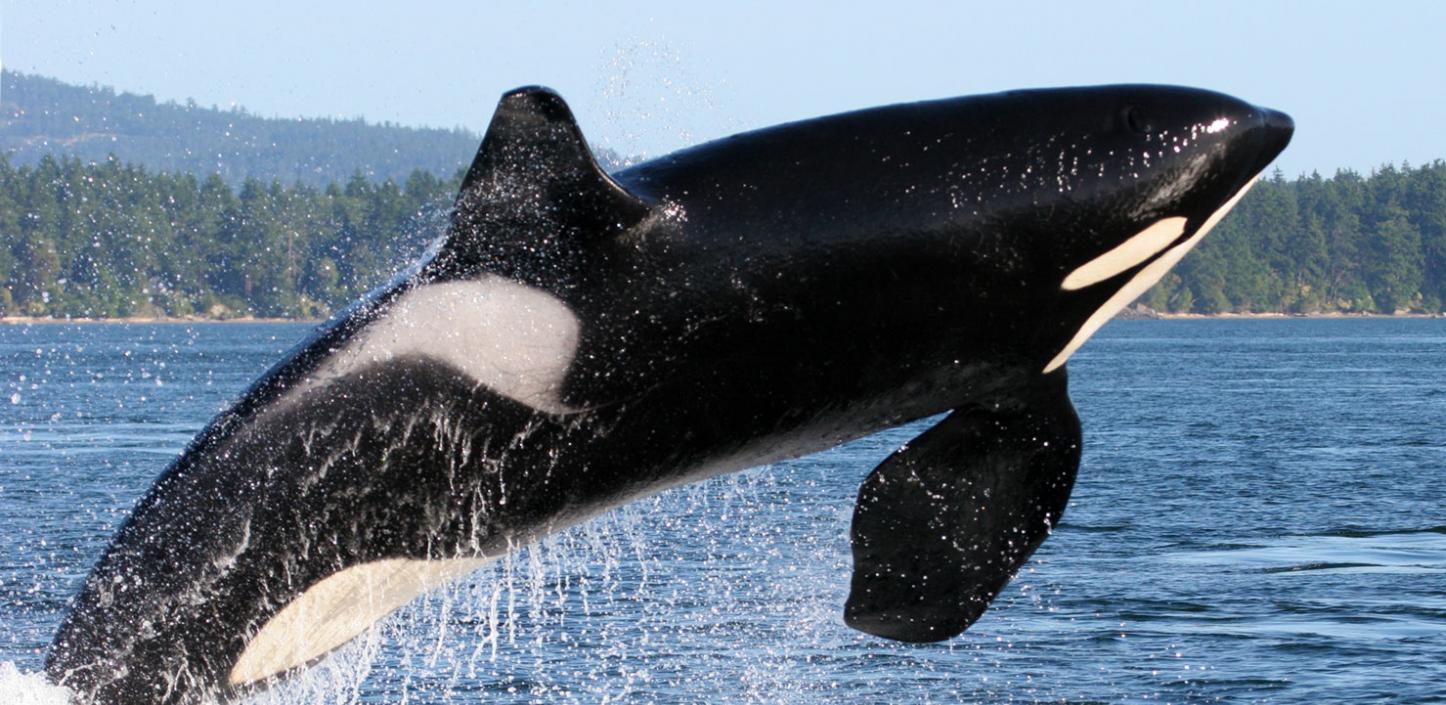
Killer Whale Research and Conservation Program
Partnerships in Conservation video series
Prey Availability
Prey availability is a big problem for Southern Resident killer whales. Their diet relies heavily on Chinook salmon. However, the population of salmon has drastically diminished in the Salish Sea or thee fish are so small that the whales can’t find them.
The Killer Whale Research and Conservation Program is investing in organizations such as Long Live the Kings, which researches survival rates for Chinook salmon.
“The research we’re focused on now is looking at hatcheries where we could try to improve the survival and size of fish so that our starving whales have more to eat,” said Michael Schmidt, deputy director of Long Live the Kings.
The Northwest Straits Foundation, another grant recipient, is restoring and protecting nearshore habitat for juvenile Chinook salmon in the Northwest Straits and northern Puget sound to increase prey availability for Southrn Resident killer whales.
“We want to increase the availability of Chinook, but to do so, we need to consider the entire food chain,” said Lisa Kaufman, nearshore program manager for Northwest Straits Foundation. “By removing shoreline armor and preventing future installations, we can restore and protect the natural habitat of insects, forage fish and juvenile salmon.”
Habitat
Impacts to habitat are a huge problem for Southern Resident killer whales, whether it’s contaminants in the environment, loss of habitat for prey species or things like noise in the environment.
The Whale Museum received a grant from the Killer Whale Research and Conservation Program to collect vessel density and disturbance data for the Southern Resident killer whale population in the Salish Sea. The museum will educate boaters and increase compliance with current regulations and guidelines to reduce vessel disturbance.
“We have on-the-water education and research and then we are also there to prevent disturbance from vessels,” said Taylor Shedd, marine mammal researcher for the Whale Museum. “That’s why we’re out there we’re trying to increase knowledge about Southern Resident killer whales and the guidelines that protect them.”
Research
There’s such a complicated array of threats impacting Southern Resident killer whales that there’s a lot that we still don’t know. The research portion of this Killer Whale Research and Conservation Program is designed to identify those gaps and improving our understanding of the animal’s history so that we can more effectively protect them.
The National Oceanic and Atmospheric Administration (NOAA) is researching the amount of contaminants a female killer whale transfers to her calf.
“One of the surprising things that we found is that these calves are getting very high doses of contaminants in the milk from zero to five months, which is a huge concern because newborns are still developing and they’re more susceptible to illnesses,” said Dawn Noren, Ph.D., a research fishery biologist for NOAA. “It’s a difficult problem.”
NOAA also researches critical habitat for killer whales in the winter months.
“We’re using passive acoustic recorders to determine where the whales are during the winter on the outer coast of Washington,” said Brad Hanson, Ph.D., a wildlife biologist for NOAA. “When we hear a particular stereotypic call, we know it’s a particular pod at that location. We can connect the detections together to get movements. So the acoustic recorder data is helping to inform the revision of critical habitat.”
The Killer Whale Research and Conservation Program is seeking solutions to improve the overall management of the iconic species to bring the population back.
To learn more about the partners supporting the Killer Whale Research and Conservation Program, please visit SeaWorld, Shell Oil Company, the U.S. Fish and Wildlife Service, and NOAA Fisheries.
Partners: SeaWorld Entertainment, Inc., Shell, U.S. Fish and Wildlife Service, National Oceanic and Atmospheric Administration